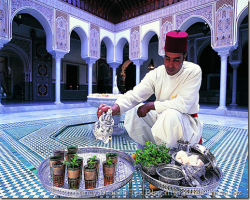Moroccan Mint Tea, Your Morocco Travel Guide
February 7th, 2015
It is impossible to be in Morocco for long before you are offered a cup of frothy, steaming mint tea. A key part of the legendary Moroccan hospitality, hot sweet tea is used to welcome a guest, to revive a flagging spirit, to facilitate social interaction and to oil a…


